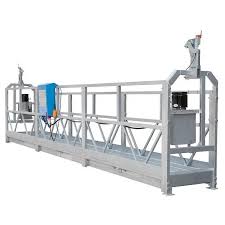Riser fluidized bed units are widely used in various industries due to their unique characteristics and advantages. This article aims to provide a comprehensive overview of riser fluidized bed units, including their working principle, applications, design considerations, advantages, and limitations.
Working Principle
The working principle of a riser fluidized bed unit involves the upward flow of gas or liquid through a bed of solid particles. The fluidization occurs when the upward velocity of the fluid exceeds the minimum fluidization velocity, causing the solid particles to behave like a fluid. This fluidization promotes efficient mixing, heat transfer, and mass transfer within the bed.

Applications
Riser fluidized bed units find extensive applications in various industries, including petroleum refining, chemical processing, biomass conversion, and wastewater treatment. They are commonly used for catalytic cracking, gasification, combustion, drying, and particle coating processes.
Design Considerations
Designing a riser fluidized bed unit requires careful consideration of several factors, such as particle size and density, fluid velocity, bed height, and heat transfer requirements. The selection of appropriate materials for the construction of the unit is crucial to ensure compatibility with the process conditions and prevent corrosion or erosion.
Advantages
Riser fluidized bed units offer several advantages over conventional systems. Firstly, they provide excellent heat and mass transfer due to the high contact surface area between the fluid and solid particles. Secondly, they exhibit good mixing characteristics, ensuring uniform distribution of reactants and products. Additionally, the fluidized bed allows for easy control of temperature and residence time, leading to enhanced process efficiency. Moreover, the ability to handle a wide range of particle sizes and the flexibility to operate at different pressures make riser fluidized bed units versatile and adaptable to various applications.
Limitations
Despite their numerous advantages, riser fluidized bed units also have certain limitations. The high gas or liquid velocities required for fluidization can lead to significant pressure drops, requiring additional energy for fluid circulation. The potential for particle attrition or elutriation may result in the loss of valuable catalysts or fines. Furthermore, the presence of fine particles or agglomerates can cause bed agglomeration or defluidization, affecting the overall performance of the unit.
Conclusion
Riser fluidized bed units are versatile and efficient systems widely used in various industries. Their unique characteristics, such as excellent heat and mass transfer, good mixing, and easy control of process parameters, make them suitable for a wide range of applications. However, careful design and operation are necessary to address the limitations associated with pressure drops, particle attrition, and bed agglomeration. Overall, riser fluidized bed units continue to play a vital role in advancing process technologies and promoting sustainable development.
Advantages of Fixed-Bed Units in Chemical Processing
en.chem-unit.com
Shanghai Chem-Unit Technologies Co. Ltd.
